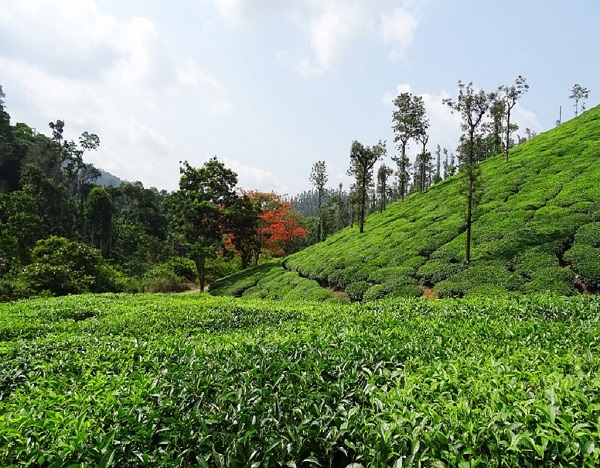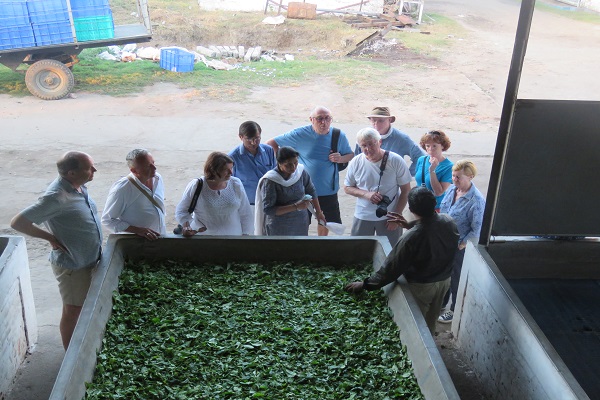Imagine yourself, almost forgetting the concept of time, amidst widely spread tea gardens. Where the tea leaves are being plucked for your morning tea. Dreamy isn’t it? Turn this dream of yours into reality while you’re in Assam, a paradise which is filled with lush and refreshing tea gardens.
The valley of Assam is the birthplace of the black tea or, as it is so famously called, the English Breakfast Tea. In this valley of innumerate tea gardens, one that you must visit is the Kaliabor tea estate.
Take in the heavenly aroma as you enter the estate and know all about the science and cultivation of tea from the workers. Kaliabor gives you, a passionate tea drinker, the perfect excuse to travel.
Origin of Tea :
The legendary origin of tea tells us a story about how the tea culture began 5000 years ago, in China. If this legend is to be believed, the great Shen Nong, an emperor and skilled ruler, was the one who discovered tea for the first time.
Travelling on a bright summery day, Shen Nong stopped for some rest with his troop. When his humble servants were boiling water for refreshments, it was then that some dried leaves fell into this boiling water turning it into a brownish coloured liquid.
This obviously intrigued Shen Nong and he tasted the water only to find it extremely refreshing. This is how tea came into being.
History of Tea in Assam :
For centuries, tea was only considered to be a Chinese speciality until they discovered a new variety in Assam, India – the Black Tea or more commonly, the cup of chai that starts your day.
The story of Assam tea being discovered goes something like this. In 1823 a Scottish adventurer, Robert Bruce, noticed tea-like plants growing wild near Rangpur. Bruce made an arrangement with the tribal chief to give him samples of these tea leaves with seeds, as he planned on having them scientifically examined.
In early 1830, Robert Bruce’s brother, Charles, sent a few of these leaves to a botanical garden in Calcutta to be properly examined and it was then that this plant was officially classified as a tea variety called – Camellia sinensis var. Assamica.
Assam black tea rose to prominence and quickly became the leading competitor to China’s tea monopoly. Today, India is the largest consumer and the second largest producer of tea in the world.
The Process of Tea Cultivation :
Assam is surrounded by the northern Himalayas, the Brahmaputra plains, and the Deccan plateau, making it one of the richest biodiversity zones in the world. The valley is fertile and offers rich loamy soil, creating the perfect natural setting for the production of tea.
With natural beauty and tea gardens that stretch for miles, a community of hard-working women spends their day plucking leaves from tea plants so they can be dried and used for brewing tea.
The harvesting of Assam tea is generally done twice each year – the first flush which begins late March and goes on until late May; and the second flush which is usually in June and makes the famous “tippy” tea. The tippy tea from the second flush has a fuller body and is sweeter, therefore considered as superior to the first flush (you can actually buy fresh leaves right here from the estate itself).
The women pluck new and tender “flush” (two leaves and a bud). The leaves are then transported to factories for further processing. They are de-moisturized and withered. Withering removes moisture while leaving the leaves soft and pliable.
Next, the tea is rolled in special machinery rather than crushed so that the aromatic oils that flavour the tea are not destroyed. It is then finally transported for production and tasting.
Honestly, this is just a gist of the magnificence of the whole process that takes place, why not be there and ask the owners and workers of Kaliabor itself?
Start your day early, feel the chilly air and dew drops on the bushes brushing against you as you walk through them. Watch the sprinklers cutting into the sun-rays while splashing water all around. Soon after, enter the ladies wearing colourful dresses with baskets on their heads, all set to pluck the flushes.
Kaliabor is an entirely different world in itself, right out of a painting. An important pitstop on the MV Mahabaahu cruise, guests will have the opportunity to witness the production, pluck tea themselves and even indulge in a tea tasting session. One of the other highlights of this visit is the dance that the local children put on – not for tips, not for money from the guests – but only out of pure joy and enthusiasm to share their culture.
The beauty of this experience doesn’t end there. Travellers also get the opportunity to visit the estate manager’s bungalow and tuck into authentic local cuisine. Take a break from your hectic routine and plan your tea travel now. After all, a cup of Chai just makes everything better!





















Leave a Reply
You must be logged in to post a comment.